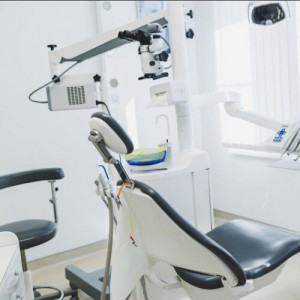
What are mechanical and biological properties of Zirconia-Reinforced Lithium Silicate (ZLS)?
Allegra Comba
The constant research of new restorative materials has lead to the production of zirconia-reinforced lithium silicate ceramics (ZLS), a material with high mechanical and esthetic performances, that can be employed with CAD/CAM technologies. These ceramics have a microstructures characterized by an homogeneous glassy matrix that contains a crystalline component made of round and submicrometric elongated grains of lithium metasilicates and lithium orthophosphates; in addition to these, tetragonal zirconia fillers are added, aimed at increasing strength values. After a crystallization process, lithium disilicate grains are generated.
At present, a more in-depth look from a scientific point of view, in order to formulate a clear definition of clinical indications and limitations of the employment of ZLS is needed, thus the group of research conducted by Prof. Zarone et al., from the University of Naples, conducted a review of the literature on the mechanical and biological properties of ZLS in CAD/CAM systems.
Materials and methods
The researchers conducted an extensive search of the literature for papers related to ZLS on the databases of PubMed/Medline, Scopus, Embase, Google Scholar, Dynamed, and Open Grey. The literature search was performed using a combinations of the keywords "zirconia-reinforced lithium silicate" or "ZLS".
Prof. Zarone et al. considered as appropriate for the present literature review only the studies that met the following inclusion criteria: 1) studies focused on the biocompatibility and/or mechanical properties of ZLS for CAD/CAM systems; 2) studies performed in vitro, in silico, or in vivo; 3) case reports; 4) systematic reviews.
Results
The literature search was completed in February 2021 and the included studies were published between 2015 and January 2021. The authors of the present literature review found a total of 937 records. After the removal of duplicates and the exclusion of papers that did not meet the inclusion criteria, 71 papers were included and no disagreement was pointed out among the search investigators about the included records.
Conclusions
After reviewing the included records, the Italian research team conducted by Prof Zarone, concluded that two types of ZLS (Vita Suprinity PC; Vita Zahnfabrik and Celtra Duo; Dentsply Sirona) are nowadays available on the market for CAD/CAM systems. The two material are similar in their chemical composition, microstructure, and biological-mechanical properties. Furthermore, the authors reported that ZLS is a biocompatible material, whose fracture resistance can withstand physiological chewing loads and that the firing process influences the improvements of strength and fatigue failure load, with a volumetric shrinkage. Finally, ZLS can be considered a viable alternative to other glass-ceramics for fixed single restorations.
For additional information: Zirconia-Reinforced Lithium Silicate (ZLS) mechanical and biological properties: a literature review.
 Related articles
Related articles
Digital Dentistry 30 September 2025
Diagnosis and Treatment Planning for Predictable Restorative Outcomes
The dilemma in comprehensive dentistry is that dentists are often focused on restoring teeth for esthetic outcomes, and if occlusion is not taken into account during diagnosis and treatment planning,...
Digital Dentistry 15 September 2025
In the past few years, digital dental workflow has gradually replaced the conventional dental workflow in a growing number of developed countries.
Digital Dentistry 29 August 2025
Digital dentistry: The new state of the art — Is it disruptive or destructive?
Summarizing the new state of the art of digital dentistry, opens exploration of the type and extent of innovations and technological advances that have impacted – and improved – dentistry.
Digital Dentistry 14 August 2025
Application of digital workflow and technologies in clinical paediatric dentistry: a scoping review
The purpose of the present scoping review is to map the literature reporting on the application of digital workflows and digital technologies in the diagnosis, treatment, or management of dental...
Digital Dentistry 23 July 2025
Contemporary Digital Dentistry for Complex Cases in the Anterior Maxilla
To demonstrate how contemporary digitally driven workflow can enhance outcomes for complex esthetic dental cases, focusing on three distinct clinical scenarios involving implant placement, esthetic...
 Read more
Read more
Editorials 10 October 2025
With proud smiles and crisp white coats, ninety-three learners from the DDS Class of 2029 and the International Dentist Pathway Class of 2028 marked the start of their dental careers at the UCSF...
Periodontology 10 October 2025
Continuous professional development (CPD) in Periodontology refers to the overall framework of opportunities that facilitate a life-long learning practice, driven by the learner-practitioner and...
TheraBreath, the #1 alcohol-free mouthwash brand in the U.S.*, has introduced a new line of dentist-formulated, clinically tested toothpastes designed to support professional oral care...
News 10 October 2025
New officers and trustees were installed at the Minnesota Dental Association’s Leadership Conference on September 19 in Minneapolis.
News 10 October 2025
Smartee Denti-Technology today announced that Professor Gang Shen, its Chief Scientist and Executive President of TaiKang ByBo Dental, has once again been named to the World’s Top 2% Scientists...















